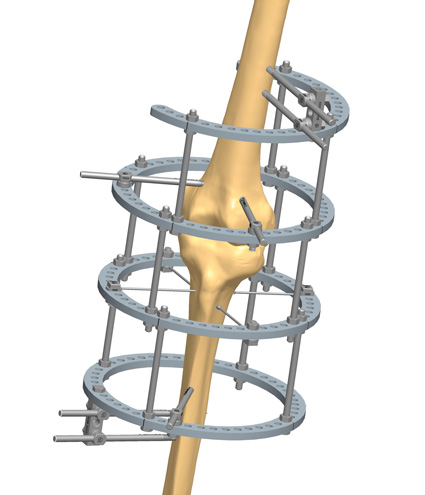TrueLok™ Fixator
THIS INFORMATION IS FOR HEALTHCARE PROFESSIONALS ONLY
THIS INFORMATION IS FOR HEALTHCARE PROFESSIONALS ONLY
Knee fusion with the TrueLok Fixator.
| Q.ty | Catalogue N. | Description |
|---|---|---|
| 3 | 56-10940
|
TL PLUS FULL RING, 170MM |
| 1 | 56-12640
|
TL PLUS FIVE EIGHTHS RING 170MM |
| 11 | 55-10060
|
115MM THREADED ROD |
| 2 | 54-11620
|
TL+ THREE HOLE POST |
| 7 | 54-11530
|
TL+ UNIVERSAL HALF PIN FIXATION BOLT 4MM - 6MM |
| 4 | 54-1152
|
TL,BOLT, WIRE FIXATION, UNIVERSAL |
| 6 | 99-912640
|
XCALIBER BONE SCREW STERILE L260/40MM THREAD D6.0-5.6MM |
| 55 | 50-1008
|
TL, NUT, STAINLESS STEEL, 10MM |
| 2 | 54-1215
|
TL,WIRE, W/STOPPER, 1.8MM X 400MM |


Knee fusion with the Procallus Fixator (90000 series). In poor quality bone, two fixators can be use...
Read MoreFoot and Ankle Charcot Reconstruction with External Fixation
Surgical reconstruction of foot and ankle Charcot with external fixation is especially useful in the presence of poor bone quality,Read MoreExpert Tips on How to Medically Diagnose Charcot Arthropathy
The diagnosis of Charcot neuroarthropathy of the foot and ankle can be challenging due to a lack of information inRead MoreThis website is reserved only for Healthcare Professionals and their staff. Therefore, the access to these information is denied to non professional audience.
